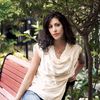Lina Sergie Attar, a Syrian-American mother of two and brilliant architect with a Masters in architecture design from MIT, leads the class she titled "Mapping Your Home." The room full of fifth grade boys watch with intense concentration as Lina draws her own home to demonstrate floor plan design. She uses the drawing to share her life with the kids, showing them the kitchen where she eats breakfast with her kids in the morning, and the bedroom where she sleeps at night. Lina tells the boys it is their turn to draw their homes.
They are resistant. Many do not remember their homes back in Syria, and do not think of their current dimly-lit slabs of concrete with yellow water and no heat as "home". Trying to draw them out, Lina suggests they sketch their future homes instead. The dream home they will have when they return to Syria.
It is December of 2013, almost one year ago. By this date, the Karam Foundation had been providing significant aid to Syrian refugees inside Syria and Turkey for some time. This was, however, Karam's first implementation of its physical wellness and therapy program ("Zeitouna") at the Salam school. So these boys have never met Lina nor have they heard of her. Still, they find comfort in the dream, and begin to draw. All but one.
"Omar, refused to draw," Lina says, recalling that day. "He said his old home is gone. And his new home is no home at all. He was completely despondent. I spent some time talking to him, trying to give him hope, but no matter what I did, I couldn't get him to draw."
Lina's voice falls with sorrow. "Finally he told me all he wants is to grow up so he can go and die in the revolution."
Omar was only eleven. His story came up in the context of a grander discussion between various Karam mentors in this November of 2014 about sustainability, and whether Karam's programming can have a lasting impact on the children it serves. After all, we leave in just a few days. We get in airplanes and fly home to our warm homes, clean water, well-paying office jobs and healthy kids with promising tomorrows. Home to our freedom.
And even if there is some lasting impact, is it meaningful? It is difficult not to consider the value of an architectural drawing class delivered in this chaos. After all, this community has nothing. They need coats for the winter, jobs, access to housing, transportation, new shoes for those growing feet, and everything in between. While Karam does distribute such supplies and provide financial assistance, the question remains whether every single available dollar should go towards direct financial aid. The numbers are frightening. In Turkey alone there are at least 1.2 million Syrian refugees, grieving for lost loves ones and their lost Syria.
"Omar still goes to this school." Lina's dark eyes suddenly sparkle and her lip curves up, as though she is holding a secret in her smile. "I know because I saw him again this trip!" She shows me a picture of the boy. His gentle smile. His hair a bit long and brushed down the middle.
"A year later! He recognized me right away and ran up to me. 'You!'" Lina points her finger, mimicking Omar. "'You!' He ran up and gave me a big hug. He said, 'I remember you! You're the one who had me draw my home!'"
Might interfacing with children through an arts and sports oriented wellness program be powerful enough to manufacture memories? Omar was convinced that he had drawn his home for Lina, when in fact such a thing never happened. He had refused to draw a single line.
Then, the boy who a year ago expected nothing more of growing up than to die, told Lina he wanted to be a police man when he grows up. He asked Lina if he could draw for her again. He took out a paper and began his picture. He drew his dream home and every room within. Then, to Lina's absolute amazement, he drew his future child. A little boy playing with a remote control car. He did not have coloring pencils, just a blue pen. So he described the colors instead.
"I want the toy car to be blue, to match my police car!" Omar told Lina.
Karam's latest trip to the border, the one for which I joined, seizes this hope. Irrigates it. By providing entrepreneurship, technology and strategic thinking skills to the teens of the Salam school, Karam's new Leadership Program does its part to build a path for these kids. It also leaves behind tangible assets, such as a computer lab and a chess camp to be run, in Karam's absence, by volunteer Salam school teachers.
In the end, however, there is no denying that we leave these slums after only a few days.
We leave.
And they stay, trapped in the harsh realities of their devastated lives.
But perhaps some part of the work stays with them. It is not much. A simple memory. Maybe even a false memory. It will not repair a lost life. Yet, it is a seed. Some hope of a future -- maybe even an attainable one. And if you plant this shift in perspective within the fertile walls of the Salam school, if you provide it within a framework that is designed to lead to success, it may blossom.
To be continued...
Many thanks for your "likes," shares, tweets, and thoughtful commentary. Dynamic and respectful conversation is welcomed and appreciated.
Yours,Shermin
Shermin Kruse is the author of Butterfly Stitching.

